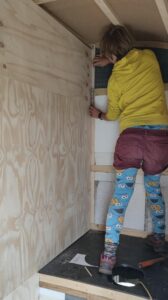DIY - construction of our compost toilet
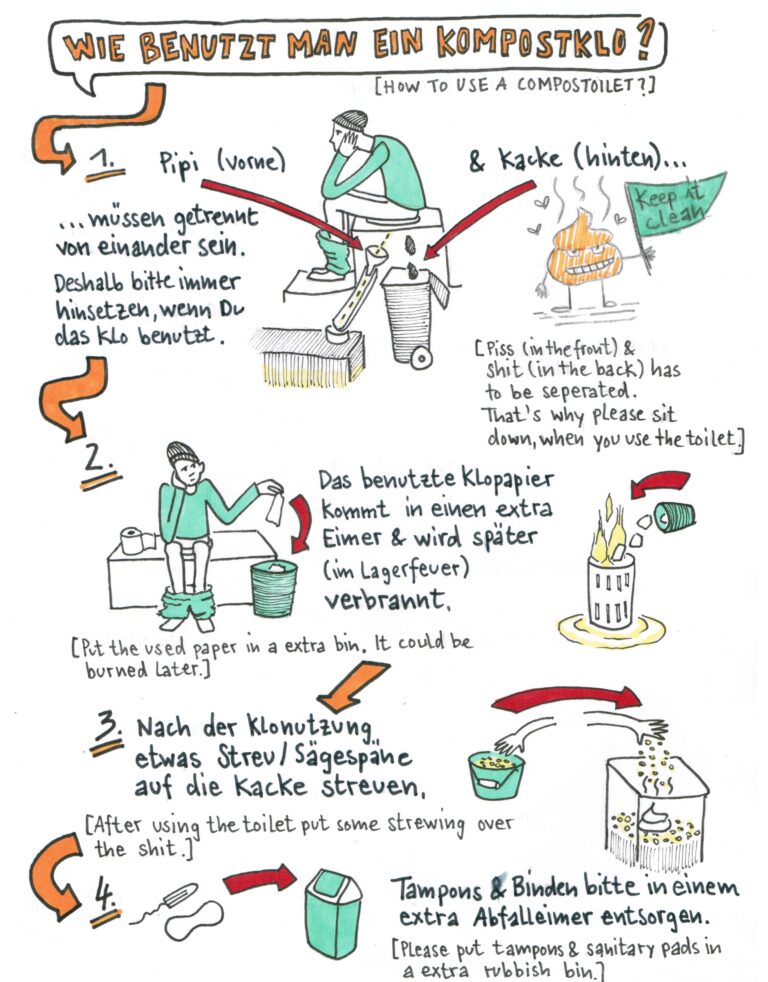
As the Altes Bahnwerk e.V. needed a new compost toilet, we decided to take on this building project. A workshop leader was found through contacts of the association, and the required materials were defined and procured in advance.
The project involved installing two toilets in an old trailer. The toilets were designed to be slightly different to accommodate anatomical differences. It was an interesting process exchanging ideas! In the end, we found two different solutions that could meet everyone’s needs.
First, we prepared the trailer: We insulated the walls with recycled Styrofoam and some wooden insulation. We extended the trailer to place the waste bins under the toilet floor, built a partition wall, installed doors, sanded the seating areas, and built toilet paper holders.
During this process, we gained a lot of experience in using common power tools and learned to work both roughly and precisely, knowing when each approach was necessary. Additionally, we learned a lot about various materials, insulation, structural stability, and, of course, the functioning principle of a compost toilet.
Our workshop leader had already built numerous toilets and could tell us a lot about the advantages and disadvantages of different construction methods and their use around the world. In many countries, compost toilets are even installed in regular houses and are nearly indistinguishable until you lift the toilet seat!
Lastly, we created a bilingual instruction manual in English and German with pictures, explaining the correct use of the toilet to its future users.
Operating mode of a composting toilet
In principle, the composting toilet is an advancement of the pit latrine – however, without its disadvantages, especially the unpleasant smell of open feces. In a composting toilet, urine and feces are separated from each other by a urine separator (a type of funnel under the front part of the toilet seat). The urine can be either diluted with water and used as fertilizer or disposed of through the sewage system.
The feces are covered with wood chips, leaves, or soil and can compost with the help of existing bacteria and fungi. Since this process takes 6-24 months, depending on the prevailing temperature, it is recommended to install a system with interchangeable containers. Stable containers of approximately 100-200 liters, such as old garbage bins or rain barrels, have proven to be effective.
The advantages of composting toilets are evident: They do not consume water like conventional flush toilets (which amounts to a water saving of 50 liters per person per day!) – and the feces no longer need to be extensively filtered out in sewage treatment plants.
Furthermore, composting toilets do not require chemicals and biocides, as found in additives for portable chemical toilets. Instead of adding biocide-containing substances to the feces to prevent decomposition, the waste is collected and composted naturally.
Toilet paper can either be composted (with attention to using thin, easily compostable paper) or separately collected and disposed of (or burned).

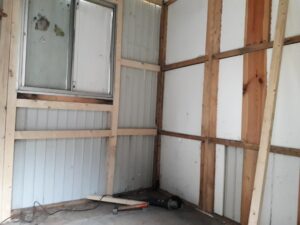
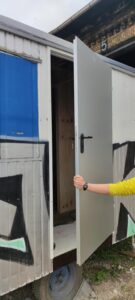
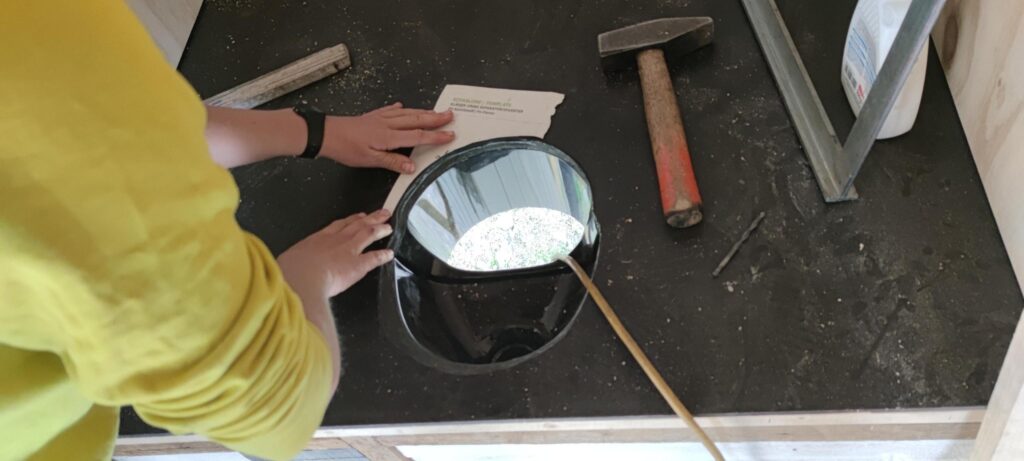
„For the first time in my life, I found myself contemplating the amount of water I consume on a daily basis. Being in a place where alternatives to safe water were practiced, such as compost toilets and rainwater collection for washing hands, opened my eyes to the ecological impact of our choices. It struck me how much water is needlessly wasted in flushing toilets, brushing teeth, and other routine activities. The realization hit me hard, and I couldn’t help but reflect on the immense ecological damage that could be prevented if everyone embraced such sustainable alternatives. It’s a reminder that even small changes in our individual habits can make a significant difference collectively. I am inspired to adopt these practices and advocate for a more water-conscious and environmentally responsible future.“
„Using a compost toilet for the first time felt strange initially, as I was accustomed to water-flushed toilets. However, as I embraced the experience, I became convinced of its merits. The concept of converting waste into compost, contributing to a more sustainable cycle, resonated with me deeply. It made me reflect on our society’s excessive water usage and the environmental impact it has. Now, I am genuinely enthusiastic about the idea of compost toilets and their potential to minimize water waste and create a positive ecological impact. It’s a small change that aligns with my values and contributes to a more sustainable future.“
